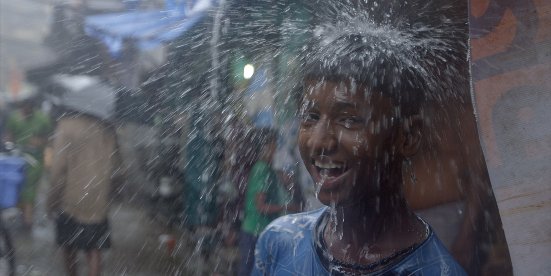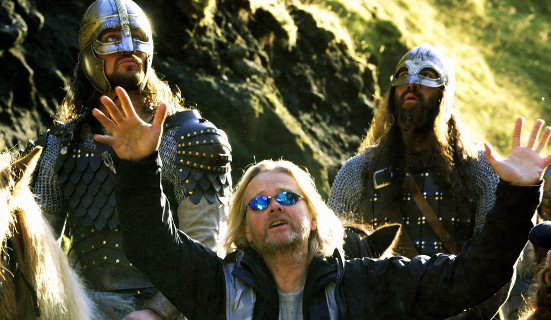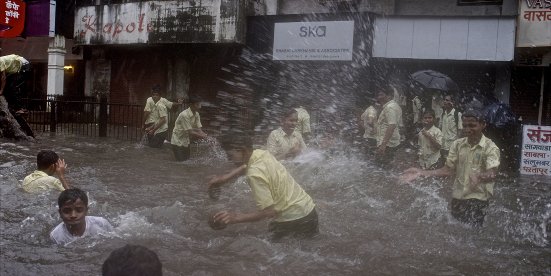
With the documentary Monsoon as one of the TIFF stunners (People’s Choice) of this past year, Sturla Gunnarsson has once again proven his commitment to excellence. Monsoon is about the various impacts of the monsoon season on people and the environment in India. One of Canada’s most accomplished film makers, he has helmed several films including Such A Long Journey based on Booker nominee Rohinton Mistry’s novel and Rare Birds.
Minority-Review’s special correspondent in Canada, Swati Sharan, has a chat with him about his love of India and how Monsoon is a movie for a cause.
I wanted to rewind back to the period of Such A Long Journey where apparently you faced a ban for criticising Indira Gandhi in India. Was this true?
No. When the film was released in India, the Indian censors demanded some small cuts. As you may recall, the film wasn’t horribly critical of Indira Gandhi. I suppose it was a little bit but the issue with the censor was strangely enough about the text at the beginning about the war in Bangladesh or in East Pakistan. They had an issue with that. The Indian censor’s thought process is impossible to understand. They demanded that be cut as they took an issue with the scene of the wall that was being smashed down because they took issue with the idea of somebody destroying Saraswati.
So I guess we had part of the story but not the full story then…
Well, it was kind of correct because we mentioned in the text at the beginning that India and Pakistan were on the verge of war and that Mrs. Gandhi was prime minister. And if you didn’t have that text in the beginning, the audience wouldn’t have known what Jimmy Bilimoria (character) was talking about when he was talking about ‘she’ stealing that money and that he was referring to Indira Gandhi. There were about eight cuts that were demanded. And most of them were silly. Like Tehmul having sex with the doll. They didn’t like that. It was like things you would read and go ‘Really?’

Rohinton Mistry and Sturla Gunnarsson in Bombay on set of Such A Long Journey. Photo by Sooni Taraporvalla
So what makes you keep going back to India given that you’ve faced a hard time?
I don’t know. That’s kind of why I made Monsoon. Monsoon is my attempt to understand what it is about India that I find so incredibly appealing. You know, it’s this country that keeps driving me crazy and I keep going back and I love it so much. And in a way that’s what Monsoon is about. I chose to make a film on the monsoon, which puts all of India in high release and you know, the chaos. The uncontrollability and the madness of the country is heightened. That’s kind of why I made the film. But it’s true. I am very attracted to the country despite the fact that it can be so challenging.
On CBC (Canadian Broadcasting Corporation), you mentioned how hard it was to be an observer when someone’s house has collapsed. What compels you to take such projects on when you could easily be working on a light film like Rare Birds?
Well, I am a filmmaker and I’m interested in the human condition. And there’s plenty of human condition in India. That’s for sure. And I like adventure. I thrive on it. I’ve been to India maybe 15 to 20 times and I keep coming back with something about the chaos or mystery and awe that I feel. Or the feeling of being amongst people of faith, which I find strangely appealing even though I am not a believer. I don’t have any religious faith. Yet being in this country filled with believers is somehow something that I find moving. I don’t know why.

A scene from the documentary Monsoon
So where in India can people see Monsoon?
Well, we haven’t released it in India yet. (Though plans are on for later this year, the date has yet to be announced.)
Somewhere further down the line, are you planning on making it available as an educational tool in India?
Well, the film is not an educational film. Have you seen it?
Yes, I have seen it. And I see what you mean about it not being an educational film. But I found some components of it to be good for junior high or high school students like when they’ve been exposed to certain facts which have been put in the film. So I couldn’t help but think of it that way.
Well, I hadn’t really thought of it that way. It will be released in India but we don’t know exactly when but hopefully before the end of 2015. That’s the goal. Once it’s released, it’ll be available on iTunes, DVD and various other platforms.

Gerard Butler, Sturla Gunnarsson and Rory McCann in Iceland on the set of Beowulf & Grendel.
On the CBC, you mentioned creating a fund for the family whose house collapsed from the monsoon you’ve shot in your film. Could you tell us more about it and where people can contribute?
Well, it’s a fund for Akhila, the young girl. She wants to become a nurse. Her state-funded education will end next year. And her family doesn’t have the resources to keep her in school. So we’re trying to give her an opportunity to go till her Masters in Nursing degree. And I won a big cash award at the Smithsonian. So I put that in to start the fund. And people have been contributing online. If you want to participate, you just go to our website on monsoonthemovie.com and follow the links. And every little bit helps. Ten bucks. Ten dollars is a lot of money in India. It goes a long way. So our goal is to raise enough money to give her an opportunity to stay in school as long as she wants to.
Does your wife, being of Indian origin, also influence your choices to make films relating to India?
Well, quite possibly. It’s not just my wife. I’m also the son-in-law and in India, you marry the family right? I’m very fond of my big extended Punjabi family. And I suppose that might contribute in some way. But I think I’m more attracted to India than she is. I like the people. I like the food. I like the madness when it isn’t driving me crazy.

A scene from Monsoon
You seem to have also got some support from Bollywood. For example, you have Moushumi Chatterjee talking in your documentary…
Moushumi starred in the film Manzil with Amitabh Bachchan, which I think has one of the greatest Hindi rain songs in it: Rhim Jhim Gire Saawan, which is sung by Lata Mangeshkar. I just love that song. It’s such a great tune and I love that sequence in the film where they’re falling in love and dancing on the streets of Mumbai. It’s such an interesting scene because it was so unusual for a Bollywood film to shoot on location because everything would be shot at Film City. And here they are running around downtown Mumbai during the scene. So I just loved the movie and I loved the song and I loved Moushumi in it. So I thought what better way to get someone to talk about the romance of the monsoon than to get Moushumi to talk and revisit the places where they filmed that scene and talk about the monsoon and romance. And she’s a very lovely person. So we had fun.
(Some photos from www.sturlagunnarsson.com)
For more interviews click here.



0
comments